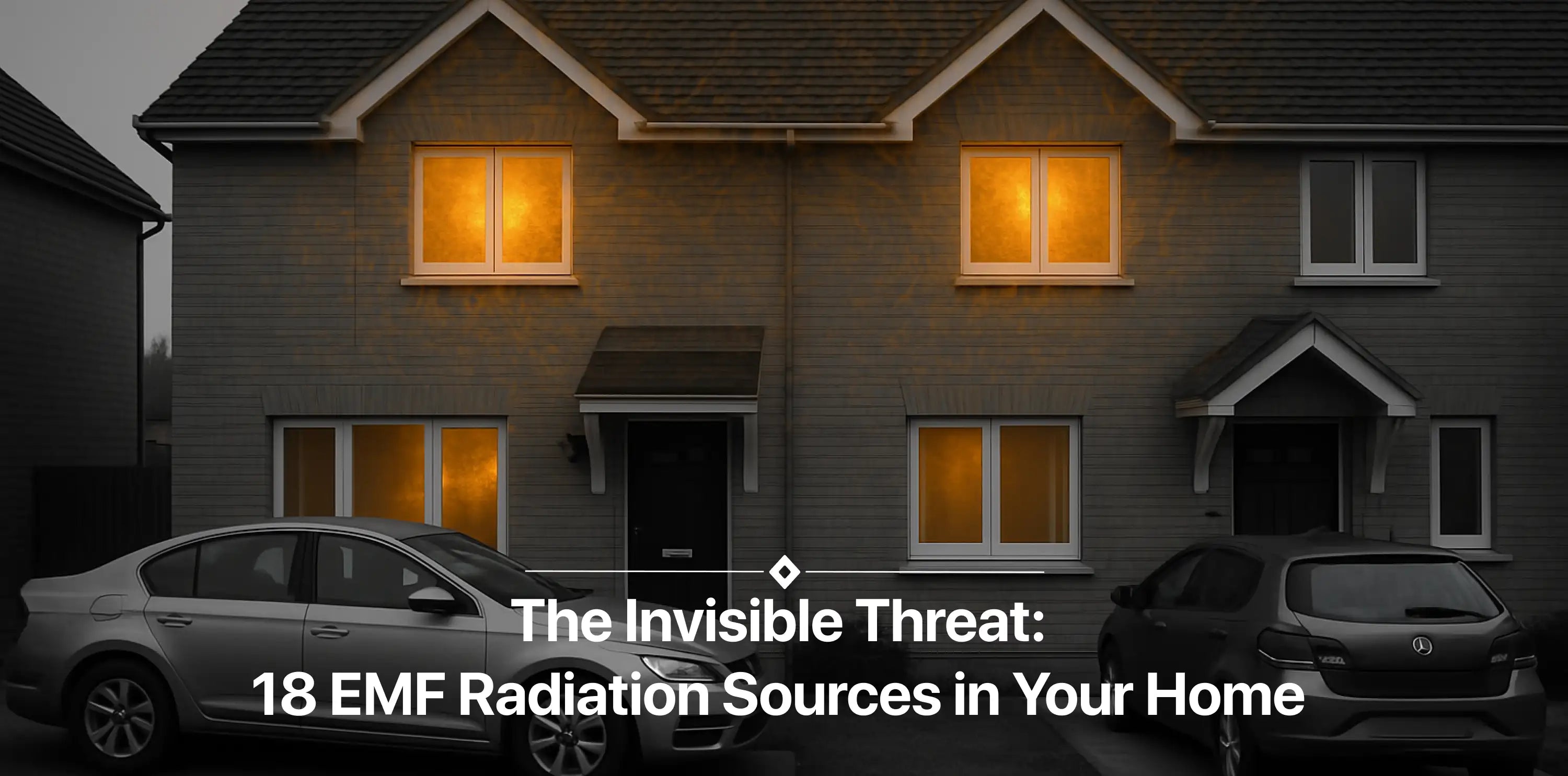Electromagnetic hypersensitivity, often referred to as electrohypersensitivity, electrosensitivity, or allergy to electricity, has become a topic of considerable debate.
Some individuals claim to experience adverse health effects from EMF exposure, leading them to describe their condition as being allergic to electricity. But is electromagnetic hypersensitivity real, or is it a misunderstood condition?
It gained popularity a few years ago because of the Breaking Bad spin-off Better Call Saul, which had Saul's brother Chuck living as a recluse, typically covered in a silver blanket and living by candlelight.
According to the World Health Organization (WHO), EHS is not a medical diagnosis, although it does admit that symptoms exist and can be "a disabling problem for the affected individual."
What the Science Says About Electromagnetic Sensitivity
It is believed that the first reports of EHS occurred in the mid-1900s. The old Soviet Union claimed that radar specialists and military personnel working with radios had EHS, often known as "microwave syndrome."
The term "electromagnetic hypersensitivity" first emerged in 1991. Since then, many people have claimed to develop EHS, particularly as electronics have become more prevalent.
In December 2005, the WHO released a comprehensive backgrounder on electromagnetic hypersensitivity after conducting workshops and reviewing available research. Their analysis found that EHS is characterized by a variety of non-specific symptoms that afflicted individuals attribute to EMF exposure. The most commonly reported symptoms include:
- Dermatological issues (redness, tingling, and burning sensations)
- Neurasthenic and vegetative symptoms (fatigue, concentration difficulties, dizziness)
- Digestive disturbances and heart palpitations
In a 2019 study, researchers assessed 28 blinded experimental trials that investigated the relationship between EMFs and EHS symptoms. They assessed the strengths and limits of each study, as well as the data's dependability.
According to the experts, studies that imply EMFs can produce undesirable effects have several limitations. This includes concerns such as neglecting to evaluate participants for illnesses that could trigger EHS symptoms or using inaccurate statistical analysis.
Can Some People Be Allergic to Electricity?
In the UK, approximately 4% of people report experiencing unpleasant symptoms as a result of exposure to electromagnetic fields emitted by mobile phones, Wi-Fi routers, televisions, and other devices.
In a 2010 survey of 26,602 Europeans, 70% agreed that emissions from mobile phone masts had an impact on their health.
The term "allergic to electricity" is somewhat misleading but serves to describe the experiences of those who claim to be sensitive to electromagnetic fields, including those emitted by Wi-Fi networks. Individuals reporting Wi-Fi sensitivity often experience symptoms such as headaches, fatigue, dizziness, and skin irritation. Despite numerous studies, a direct causal link between Wi-Fi exposure and these symptoms has not been conclusively established.
A study in Environmental Health Perspectives explored the potential for Wi-Fi to cause symptoms in those with perceived EHS. The results indicated that symptoms could not reliably be reproduced under controlled conditions, casting doubt on Wi-Fi as the direct cause. However, the study did not dismiss the symptoms themselves, acknowledging the real suffering experienced by participants.
Electromagnetic Hypersensitivity: A Form of Technophobia?
Some researchers suggest that electromagnetic hypersensitivity may be related to underlying psychological factors rather than direct physiological effects of EMFs. Potential explanations include:
- Nocebo effect: The opposite of the placebo effect—when negative expectations about exposure to something lead to negative symptoms
- Underlying conditions: Preexisting medical or psychological conditions may cause symptoms that are misattributed to EMF exposure
- Stress and anxiety: Modern life's technological demands may create stress that manifests as physical symptoms
- Misattribution: Environmental factors unrelated to EMF (such as poor indoor air quality, flickering lights, or workplace stress) may cause symptoms that are incorrectly blamed on electromagnetic fields
This doesn't mean the suffering isn't real—it absolutely is—but understanding the true causes is essential for finding effective treatments.
How to Reduce Exposure to EMF
Regardless of the debate over electromagnetic hypersensitivity, many people seek ways to minimize their EMF exposure as a precaution. Here are some practical steps to reduce EMF exposure:
- Limit Use of Wireless Devices: Use wired connections where possible and limit the use of Wi-Fi and Bluetooth devices.
- Use EMF Protection Products: Utilizing products designed to reduce EMF exposure can mitigate potential risks. Bodywell®, for instance, offers EMF radiation protection products that are proven effective through rigorous testing. Key benefits of using Bodywell® include.
- Thermal Reduction: Bodywell® products can reduce thermal absorption by up to 20%, helping to minimize heat-related effects from EMF exposure.
- Reduction in SAR: Bodywell® products have demonstrated an 80% reduction in SAR, significantly lowering the amount of radiation absorbed by the body.
- PH Recovery: Prolonged EMF exposure can disrupt the body's pH balance. Bodywell® products help recover pH levels by 100%, maintaining the body's natural equilibrium.
For those looking to delve deeper, understanding EMF toxicity symptoms and the impact of EMF exposure can be crucial in taking proactive measures.
Final Thoughts
The question "Is electromagnetic hypersensitivity real?" does not yet have a definitive answer. While scientific evidence does not conclusively support a direct link between EMF exposure and the symptoms reported by individuals, the reality of their suffering cannot be denied. Whether electromagnetic hypersensitivity is a physiological condition or a manifestation of psychological factors, remains a pressing issue for those affected.
Ultimately, more research is needed to understand the complexities of EHS. In the meantime, reducing EMF exposure and addressing both the physical and psychological aspects of the condition may offer relief to those who suffer from this perplexing ailment. Understanding EMF safe levels, exploring the implications of 5G radiation, and being aware of SAR (Specific Absorption Rate) values of devices can further contribute to a healthier and more informed lifestyle.























Leave a comment
This site is protected by hCaptcha and the hCaptcha Privacy Policy and Terms of Service apply.